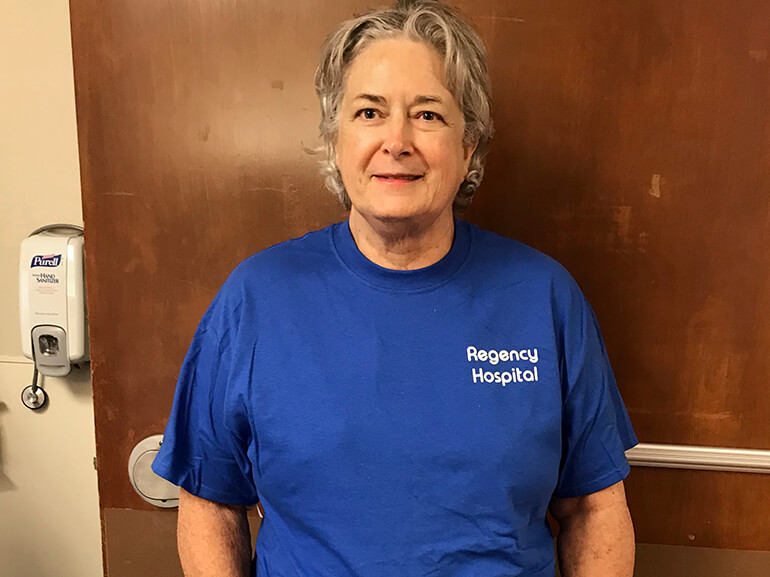Margaret's Story

It was 10 p.m. when Margaret Bloxdorf changed into her pajamas and went to bed. She was ready to relax after spending a long, emotional day packing boxes at her late mother’s home.
As soon she sat down on the bed “it felt like I had an elephant on my chest.” Reaching for the phone, she dialed 911 and passed out. When ambulance crews arrived, she heard them calling at the door. She couldn’t stand or use her arms but crawled with her face on the floor to unlock the front door.
It’s the last thing the retired human resources vice president remembers for several weeks.
Later, Margaret learned she’d suffered a ruptured aortic aneurysm, an often-fatal complication in which the heart’s main blood vessel splits. She had been rushed to her small local hospital. Shortly after, doctors arranged transfer to a larger regional medical center for emergency surgery where advanced care, including aortic dissection repair and draining of blood and fluid from around the heart and inside her lungs.
Complications, including respiratory, kidney and circulatory failure, set in. She was placed on full life support and, after surgery, was in an induced coma. Her family was told that it was touch and go for a couple of weeks. She was placed on a ventilator, tracheostomy for airway support and feeding tube.
Once stable, Margaret moved to Regency Hospital of Greenville to begin her extended recovery.
Unable to breathe, speak, eat or move freely, her goal was to return home.
A physician-led team, including nurses and therapists, created a path to independence.
“I had trouble breathing, and no appetite,” Margaret said. “I was swollen, so very weak and shaky.”
While respiratory therapists began liberation trials – gradually reducing ventilator settings and allowing the lungs to take over – physical therapists stepped in with a mobility program.
“At the beginning, just sitting up was a feat,” she said. “I was sure I would never be able to walk again. Through hard work and determination, and continued encouraging words from physical therapy, I slowly progressed from sitting, to standing and eventually walking. I wouldn’t have been able to do it without their encouragement.”
The combination of activity and breathing routines helped Margaret liberate from the machine, then have airway support discontinued.
Speech-language pathologists deployed exercises that strengthened swallowing reflexes. Dietitians matched meal plans to the textures Margaret could tolerate, building up to regular meals.
The turning point came, she said, “when I finally felt like I wasn’t going to die. I felt stronger that day, and it’s continued.”
Margaret credits the staff for being her stand-in family during Covid protocol, and cheering her on each day. She is also grateful for her “amazing” daughters, who acted as advocates and cared for her home and cat while she was hospitalized.
After seven weeks Margaret reached all of her goals and was ready for the next phase of healing. She departed for an inpatient rehabilitation hospital, spending three weeks rebuilding strength before returning home.
“I can’t wait to sleep in my own bed, eat a home cooked meal, and visit family and friends”, Margaret said.